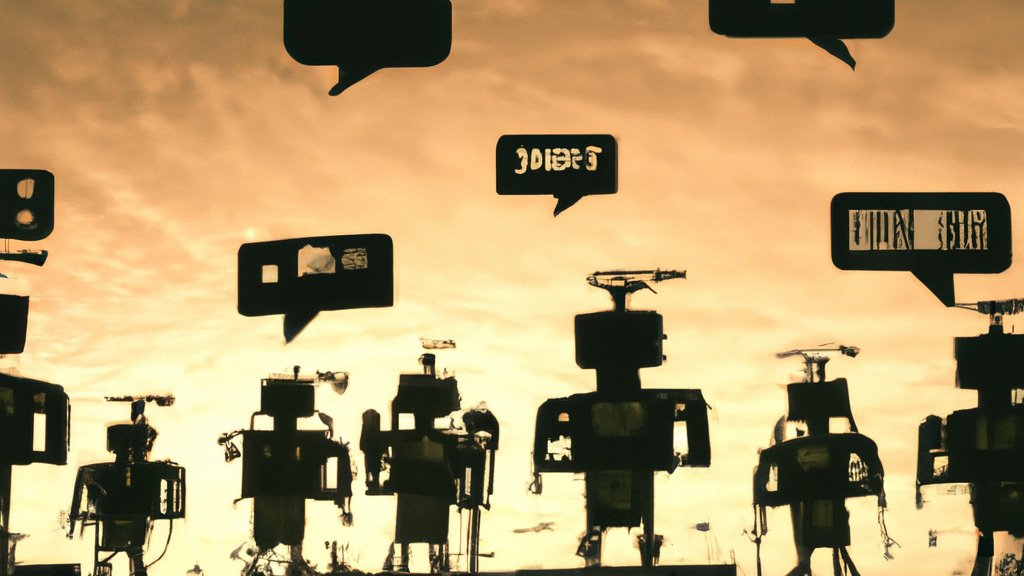November is an auspicious month. It was in November 2022 that ChatGPT was thrust into the public domain. It was also in November (2014) when Alexa became available to the public – and she was everywhere. Remember the Alexa frenzy? You could not utter the name “Alexa” on a phone call, or in a home without snapping some random digital assistant to attention. Any parent who’d named their child Alexa rued the day. There was the unforgettable AARP meets Alexa SNL skit imagining an Alexa for old folks. Voice was all the rage. We were a nation held captive. Sadly, Alexa’s primitive chatbot-like capabilities are no match for today’s chatbots, most famously Bing, Bard, and ChatGPT. like But, like those early Alexa days, AI chatbots are becoming inescapable.
In the early days of ChatGPT, you had to make a conscious effort to actively seek it out and start prompting. Other generative AI programs like Dall-e also made you come to them. Fast forward a few months and you’re suddenly finding yourself hard-pressed to keep AI at bay. In much the same way that Alexa allowed 3rd party developers to build out multitudes of apps from shopping lists to bedtime stories, AI is following suit, building AI-enabled apps atop the major large language models.

I made the mistake of adding the Chrome extension for ChatGPT named Merlin into my browser. Now Merlin appears (gobbling half my screen real estate) to summarize any website I’m contemplating visiting. On Expedia, you can use the ChatGPT engine as your travel agent. ChatGPT-powered Instacart can provide easy recipes. Over at Klarna, an online shopping company, you can query its ChatGPT-powered backend to “find the greatest new television set” and have a shopping dialog. Open AI, the parent company of ChatGPT, just announced 70 new plug-ins. The plug-ins were developed by third-party developers so that you never have to leave what you’re doing to access ChatGPT’s superpowers. (One caveat: you must be a “Plus” paying member of ChatGPT to access these features).
Grammarly used to do an awesome job of improving my writing by checking my grammar and punctuation. The new generative AI-powered Grammarly Go goes way beyond. It asks if want my writing shortened, made funnier, more assertive, or even whether I want to add images it can find for me.
Over at Adobe, I’m now using generative AI that’s been trained on voices to eliminate background noises (dogs, trains, dishwashers, or music in an exhibit hall) from my videos. This week Adobe introduced its own generative AI features, dubbed Firefly that will generate images and font effects as its first salvo into the AI arena. Its model was trained on Adobe’s huge catalog of images along with openly licensed content and stuff from the public domain. Again, no heading off to an outside image creation you’re working in AI without leaving Adobe.

Google I/O, the company’s annual conference for developers, should have been called Google AI Paloozza. All of Google’s product lines were reimagined with a long-drink of AI razzle-dazzle. As demonstrated during the event, Gmail will now craft answers to your emails. Maps will provide high-fidelity views of places on your journey before you set out the door. Photos will use a magic editor so that your skies are always blue and your backgrounds are always beautiful. (Up for debate – are these deep fakes or better photos?) Docs, spreadsheets … 25 Google products in all will get an AI IV-drip from Google’s large language model PaLM 2. Again, AI is at your fingertips without ever leaving your workspace.

AI Is Coming for You, Not Vice Versa
The observation here is threefold. First, Amazon thus far has missed its opportunity to make Alexa into a really cool AI product. It’s sold more than 100 million Echo devices, integrated Alexa with 85,000 smart home products, and its app store now boasts over 100,000 skills. Yet the company’s AI focus has been almost exclusively on AWS. Amazon is not developing its own large language model but licensing others. But ‘come on. Wouldn’t it be so cool to have an AI-powered Chatbot you could talk to?
More importantly, if the past few months’ announcements of built-in AI capabilities into our everyday work tools keep up at this pace, AI will soon become a seamless part of everything we already do. You won’t have to travel to find your chatbot. It will be coming to everything, and I mean everything, near you.
And finally, the business model for generative AI has grown up (and quickly). Licensing fees from developers, usage fees for AI-powered apps, Meta toying with AI-generated ads, and giving away it’s model to third party developers at no charge. Experiment while you can, before the bill comes due.















